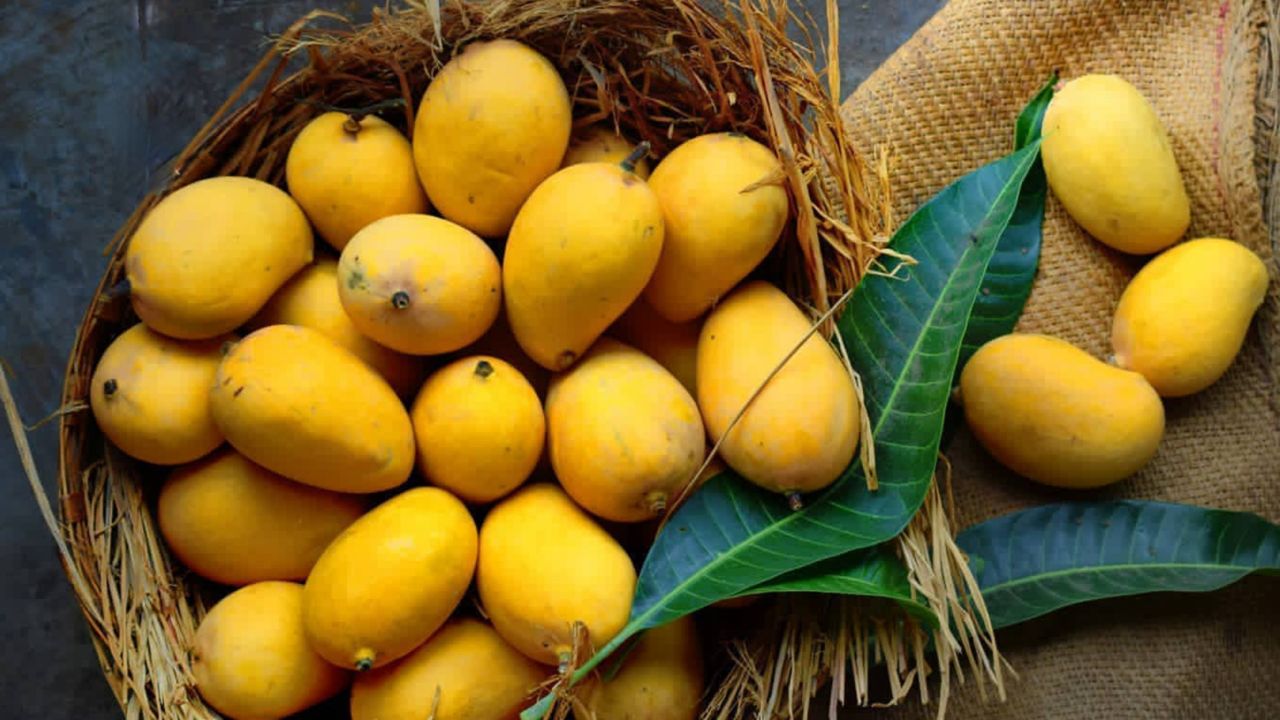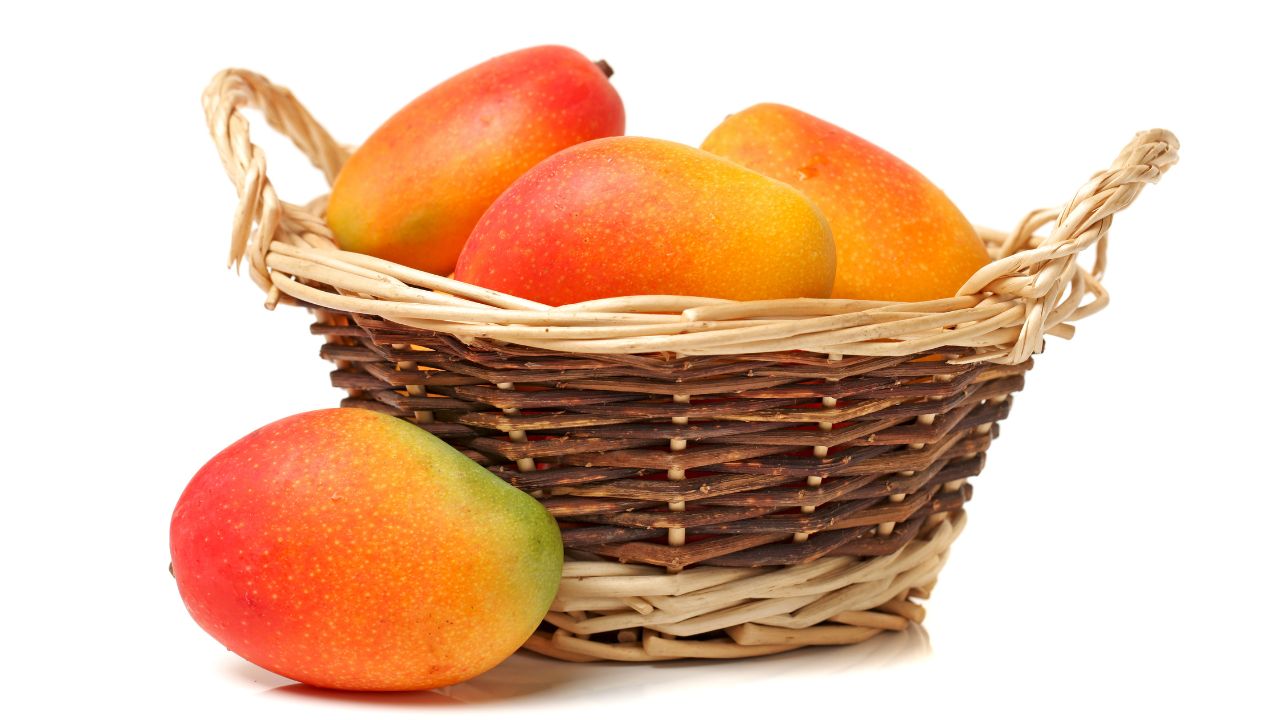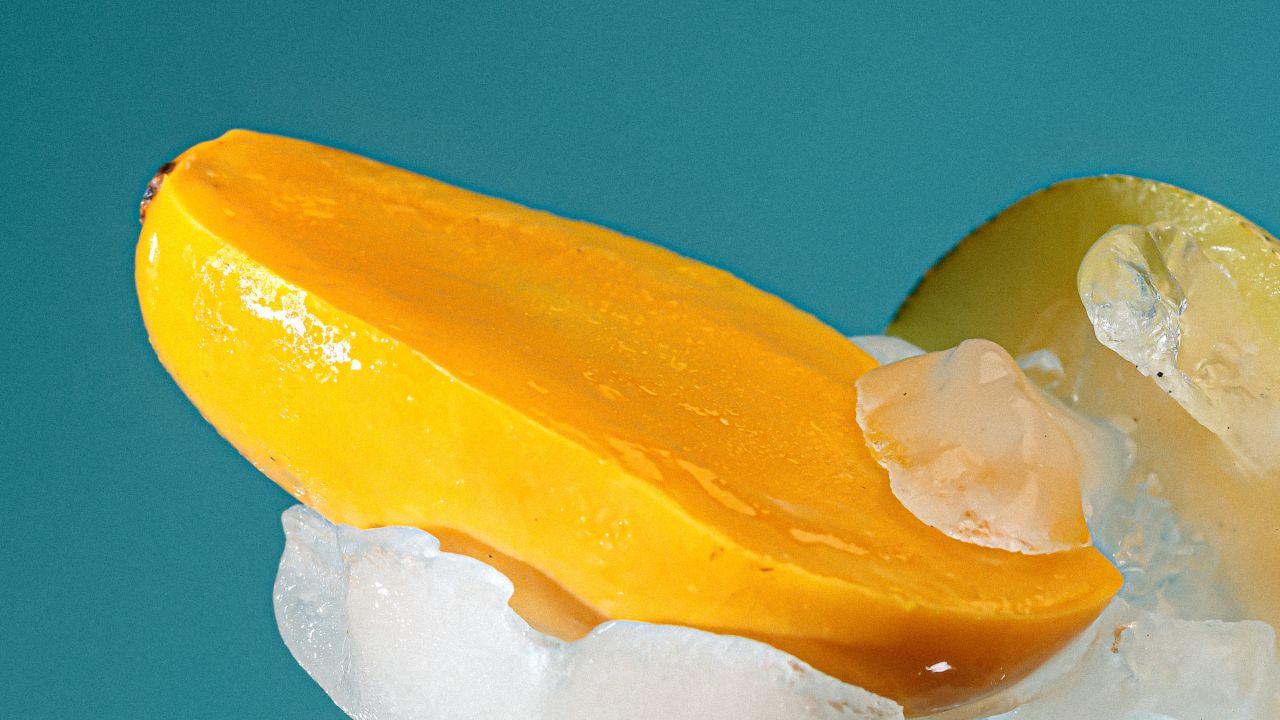Mangoes are some of the most delicious fruit on the face of this earth, and no one can argue otherwise.
They are juicy, flavorsome, and so beautiful. There are practically no limits when it comes to using mangoes, either!
You can eat them on their own, add them to fruit salads, make a smoothie, use them for a dessert topping, make a preserve, create a marinade or chutney – the list continues.
The point is, they are so versatile, it wouldn’t make sense not to get them when you have the chance.

The only issue with mangoes is their inability to live past a week. When you leave them at room temperature, these succulent fruits will only last seven days max.
No matter how much you love mangoes, you can’t eat those fourteen mangoes in that amount of time.
Thankfully, there are ways to store your mangoes so that they live past the week-mark. You can refrigerate or freeze them!
Technically, you could also dehydrate them, but you need some pretty expensive equipment for that to work.
In this article, we’ll just focus on freezing and refrigerating, as well as picking out the right mangoes!
How To Pick The Best Mangoes?
Before you can store your mangoes, you need to select your mangoes. To pick the perfect fruit, consider the following points:
Weight
A good mango should be heavy for its size. Stay away from the flat ones, or the ones that look like they should weigh more.
The plumper the mango, the juicier and better it will probably be. There’s nothing worse than a sad, dry mango.
Feel
A ripe mango will be a little soft, but not squishy. If it is squishy, It’s overripe and not good to eat anymore.
All you need to do is give them a gentle squeeze or press down at the top of the fruit by the stem. If it gives a little, it’s perfect.
It shouldn’t be too soft or too hard. You need to look for that perfect in-between spot.
Smell
Look for a sweet scent coming from the stalk end of the fruit. A ripe mango will smell good enough to eat right then and there (please don’t).
It should be clear by the smell if a mango is overripe and already fermenting, so keep a nose out for that, too.
Coloring
Coloring won’t always work, as there are lots of mango varieties in the world.
However, the majority of mangoes will turn a beautiful orange or red when they’re ripe.
An unripe mango will be green, while an overripe mango is likely to have discoloration in the form of black or brown spots.
These markings are likely to be soft, so keep an eye out for that. It could be because the mango is past its prime, or it got bruised in the process.
Either way, avoid them as both options can impact not only the flavor, but the texture of the fruit, too.
Storing Mangoes Correctly

Now that you’ve (hopefully) managed to pick the perfect mangoes, you need to know how to store them correctly.
This is crucial, or else you will end up wasting a lot of money.
It’s important to note that how you store these fruits will depend on whether they are ripe or haven’t ripened up just yet.
Thankfully, mangoes aren’t like cantaloupes, and they will still ripen once they have been picked.
If you’re wondering how to tell if a cantaloupe is ripe, look for these signs: a sweet aroma, a slight softness at the blossom end, and a creamy, golden color beneath the netting.
If you thought ahead and got some unripe mangoes, you can simply store them at room temperature to allow them to ripen.
The best way you can do this is to place them in jars or plastic bags with a little airflow – just to keep the pests away.
These unripe fruits can take up to eight days to get nice and ripe, but you need to keep a close eye on them.
Check them every day to make sure they don’t overripe, – it happens quickly! If you want to speed up the process, keep your mangoes in a paper bag.
This will cause the fruit to release ethylene, a gas that will ripen them faster.
Once ripe, you have two good options for storing: refrigerating or freezing. Let’s take a look at both options below.
Refrigeration
Mangoes should only be refrigerated once they are ripe, since the cool air will prevent them from ripening any further.
It would be pointless to keep unripe mangoes in there, right?
You can refrigerate your mangoes however you like, really. If the fruit still has the peel on, you can just leave them in there whole, or place them in an airtight container.
Sliced or peeled mangoes should always be stored in an airtight container to allow them to keep for longer.
How Long Will They Last?
Refrigerating isn’t magical, and it will only allow your mangoes to last between five and seven days.
Keeping them covered will help them stick around for longer, but if you need more time, freezing is the way to go.
Freezing
This is the only way to go if you want your ripe mangoes to last more than one week.
Before doing this, you should know that this will impact the texture, and the fruit will be squishy once it thaws.
However, it will still taste perfectly delightful. As such, you should choose to freeze your mangoes only when you don’t mind them changing a little.
Mangoes that you’ve frozen work excellently in baking and cooking, as well as shakes and smoothies (see also ‘Top 18 Best Jamba Juice Smoothies You Need To Try‘).
Just make sure that your mangoes are ripe before you choose to freeze them, because they won’t freeze once they’re in there!
Let’s take a look at the three ways you can freeze your mangoes.
Flash Freezing
This option is quick and easy, and will keep your mangoes delicious for up to 10 months. All you need to do is as follows:
- Peel your mango and slice it however you like. This can be in slices, chunks, or anything else you can think of – make sure they work for whatever you eventually intend on using them for.
- Place the chopped mango on a baking sheet. Do not allow the pieces to touch one another, or everything will just stick together forever. Take the time to do this, unless you want to spend ages trying to break them apart after they freeze.
- Place the baking sheet in the freezer on a flat surface.
- Leave the mangoes to freeze overnight, or for at least 3 hours.
- Once this time has passed, remove them from the freezer and transfer them into a bag that is freezer safe.
- Use a marker to write on the bag. Detail the bag’s contents, and the date you prepared them. You should also add the use by date, just to be safe.
Simple Syrup Freezing
Alternatively, you can freeze your mango using the simple syrup method!
This is great if you know that you will end up using the fruit for things like salads, sauces, or purées. It’s super easy, and all you have to do is as follows:
- Get a medium-sized pot out, and add two cups of sugar and one cup of water. Put on a medium-low heat, and stir the mixture constantly.
- Keep stirring until everything comes to a boil. Once that happens, allow the mixture to cool.
- Peel and cut your mango however you like, then place them in a freezer-safe container.
- When the syrup has cooled down, add it to the container and leave about one inch of space to allow it to expand as it cools.
Purée And Freezing
Finally, you can purée your mango, then freeze it!
This is always a good option if you happen to have some mango leftovers, or you know exactly what you will be doing with it.
Take a moment to consider what you will use your mangoes for before going with this method, and there’s no going back and uses will be limited once it’s puréed!
Made your mind up? Great. This is how to freeze your mangoes in puréed form:
- Peel and chop your mangoes up. Size doesn’t matter, just add them to your blender!
- Purée the mango until it is perfectly smooth, or as smooth as you like it. It’s completely up to you, and it will freeze well, either way!
- Once puréed, you will need to transfer the liquid into freezer-safe containers. Think about how you will likely be using the mango when choosing a container. For example, if you’re going to use it to make a smoothie, why not pour the purée into ice cube trays for ease?
- Once the mango has been transferred to your container of choice, make sure to label it so that you know when you should use it. It technically won’t go off, but its quality will slowly deteriorate over time.
How To Defrost Your Frozen Mangoes?

When it comes time to thaw your mangoes, there are a number of ways you can do this:
- Leave it in the refrigerator overnight – while this is the best and safest way to thaw anything, it does take a while.
- Place the mango in cool water – this will thaw your mango in three or four hours, so it’s great if you’re in more of a rush.
- Don’t thaw it – maybe you don’t even need to thaw your mango! This is a good option if you are going to use your mango for smoothies or something similar. You can go straight to blending it up, and it will be perfect.
Be sure to heat your mango for a few extra minutes if you’re using it for cooking. If you’re making a smoothie or something similar, just add less ice than you usually would!
Smoothie King offers a variety of delicious smoothies that can be enhanced with frozen mangoes if you choose not to thaw them.
Keeping Mangoes Fresh For Longer
Store your mangoes at temperatures below 40 degrees Fahrenheit if you want to keep your mangoes as fresh as possible.
This trick will always come in handy, and works for lots of food items!
Telltale Signs That Your Mango Had Gone Bad
Sometimes, we don’t get to use a mango before it starts to go off. It’s sad, but that’s a part of life. There are a few telltale signs to look out for:
- It smells sour or fermented
- It has become too soft or mushy
- Its skin is discolored or turning black
Be sure to not throw an overripe mango out too quickly, though! You can still make use of one by turning it into a purée!
You could also cut off the overripe parts and use it that way. Just make sure that you aren’t eating a rotten mango.
Final Thoughts
Mangoes are so good, and they aren’t that cheap, either! When you buy one, you want to make sure that you’re buying a good one.
Knowing how to properly store your mangoes will make your life a lot easier and much less frustrating.
Hopefully this helped, and you can now do what’s best for your mangoes!
- 15 Traditional Greek Breads - July 31, 2023
- 30 Delicious And Gluten-Free Cookie Recipes - July 29, 2023
- 30 Of The Best European Desserts - July 29, 2023
